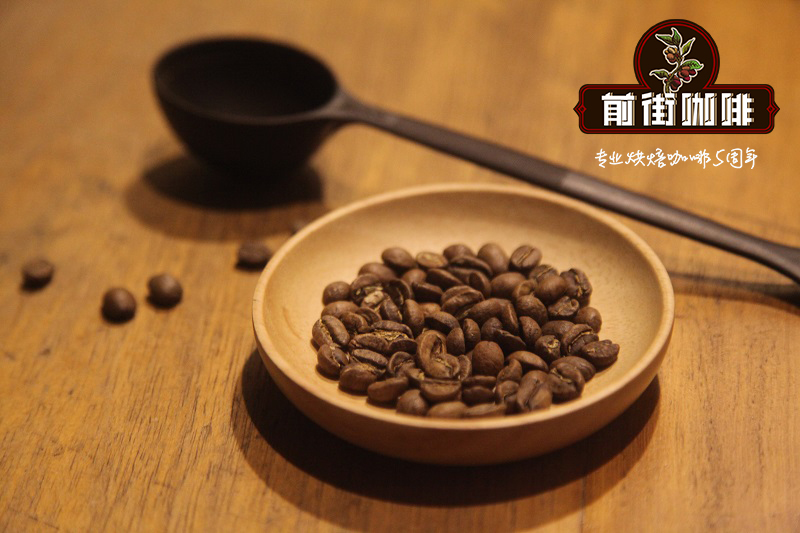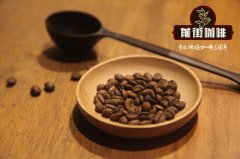Hawaiian Kona Coffee introduces Hawaiian Kona Coffee classified as boutique from the island

Professional coffee knowledge exchange more coffee bean information please follow the coffee workshop (Wechat official account cafe_style)
Front Street-Hawaiian Kona Coffee
The good quality of Kona coffee should be suitable for the right geographical location and climate. Coffee trees grow on the slopes of volcanoes, and their geographical location ensures the altitude needed for coffee to grow; the dark volcanic ash soil provides the necessary minerals for coffee.
This is probably due to the fact that Kona Island is rich in volcanic black mud with moderate acidity, rich mineral content and suitable water content. And every afternoon, a cloud floats over the island of Kona to block out the sun to protect fragile coffee saplings.
The climate is very suitable, the sun in the morning gently passes through the air full of water vapor, in the afternoon, the mountains will become more humid and foggy, and the white clouds surging in the air are natural umbrellas for coffee trees, and the evening will become sunny and cool.
Because of the suitable natural conditions, the average yield of Kona coffee is very high, reaching 2240 kg per hectare, while the yield of coffee in Latin America is only 600 kg to 900 kg per hectare.
Kona coffee beans are actually subdivided into five levels, and the first three levels are more common, followed by extra good (ExtraFancy), good (Fancy) and No. 1 (NumberOne), first class (Primary) and round beans (Peaberry), (round beans, commonly known as public beans, because some coffee lovers love them, especially those that can be sold at higher prices). About 5% of the beans in Kona coffee beans are round beans. Except for the special selection of round beans, the other four grades are graded according to the size, weight and defect ratio of beans. Before the Kona raw beans are exported, a number label is affixed to the sack, which indicates that it has been certified by the Hawaiian Department of Agriculture, with an identified official seal.
Like many Arabica species at high altitudes, Kona has the sweetness of tropical fruits, the aroma of herbs, and a rich nutty flavor that doesn't make you feel too rich. -- with a little mellow of Southeast Asian beans & the commotion and rhythm of Ethiopian beans!
Most of the coffee on the market today, which calls itself Kona, contains less than 5% of the real Hawaiian Kona beans, commonly known as "comprehensive Kona". Real Kona coffee is indeed a treasure in the world, it is not easy to find, even in the United States, it is difficult to buy genuine coffee.
If friends have the opportunity to go to Hawaii, in addition to enjoying her blue sky coconut forest and silver beach, you are also recommended to visit the coffee farm there. You can sit by the sea and drink a cup of fragrant Kona coffee. Watching the fiery sunset sink into the red-orange sea, I am afraid there is no place in the world that can provide you with such enjoyment, just like Mark. Twain painted a mediocre image of the most enjoyable place on earth.
In short: Qianjie is a coffee research hall, happy to share the knowledge about coffee with you, we share unreservedly just to make more friends fall in love with coffee, and there will be three low-discount coffee activities every month. The reason is that Qianjie wants to make more friends drink the best coffee at the lowest price, which has been Qianjie's tenet for 6 years!
END
Important Notice :
前街咖啡 FrontStreet Coffee has moved to new addredd:
FrontStreet Coffee Address: 315,Donghua East Road,GuangZhou
Tel:020 38364473
- Prev

Coffee producing areas and Taste characteristics Kona Coffee beans are the kings of the powerful style.
Professional Coffee knowledge Exchange more information on coffee beans Please follow Coffee Workshop (Wechat official account cafe_style) Front Street-Hawaii Kona Coffee the best Hawaiian Arabica coffee beans grow 2000 feet above sea level on the fertile slopes of the Mauna Loa and Hualalai volcanoes on the Big Island of Hawaii, Kona Coffee is known for its rich, light and delicate taste as well as complex aromas. No.
- Next

The origin of Huakui coffee beans comes from Sidamo, Sidamo, the special flavor of washed Huakui coffee beans.
Professional coffee knowledge exchange more coffee bean information Please follow the front street of Coffee Workshop (Wechat official account cafe_style)-Sidamo Water washing Sakui as we all know, Ethiopian coffee has always been synonymous with boutique coffee and is one of the best coffee in the world. Ethiopia is also the birthplace of coffee. Essex coffee basically takes the place name of the producing area as the name of the coffee, such as the most well-known
Related
- Beginners will see the "Coffee pull flower" guide!
- What is the difference between ice blog purified milk and ordinary milk coffee?
- Why is the Philippines the largest producer of crops in Liberia?
- For coffee extraction, should the fine powder be retained?
- How does extracted espresso fill pressed powder? How much strength does it take to press the powder?
- How to make jasmine cold extract coffee? Is the jasmine + latte good?
- Will this little toy really make the coffee taste better? How does Lily Drip affect coffee extraction?
- Will the action of slapping the filter cup also affect coffee extraction?
- What's the difference between powder-to-water ratio and powder-to-liquid ratio?
- What is the Ethiopian local species? What does it have to do with Heirloom native species?

